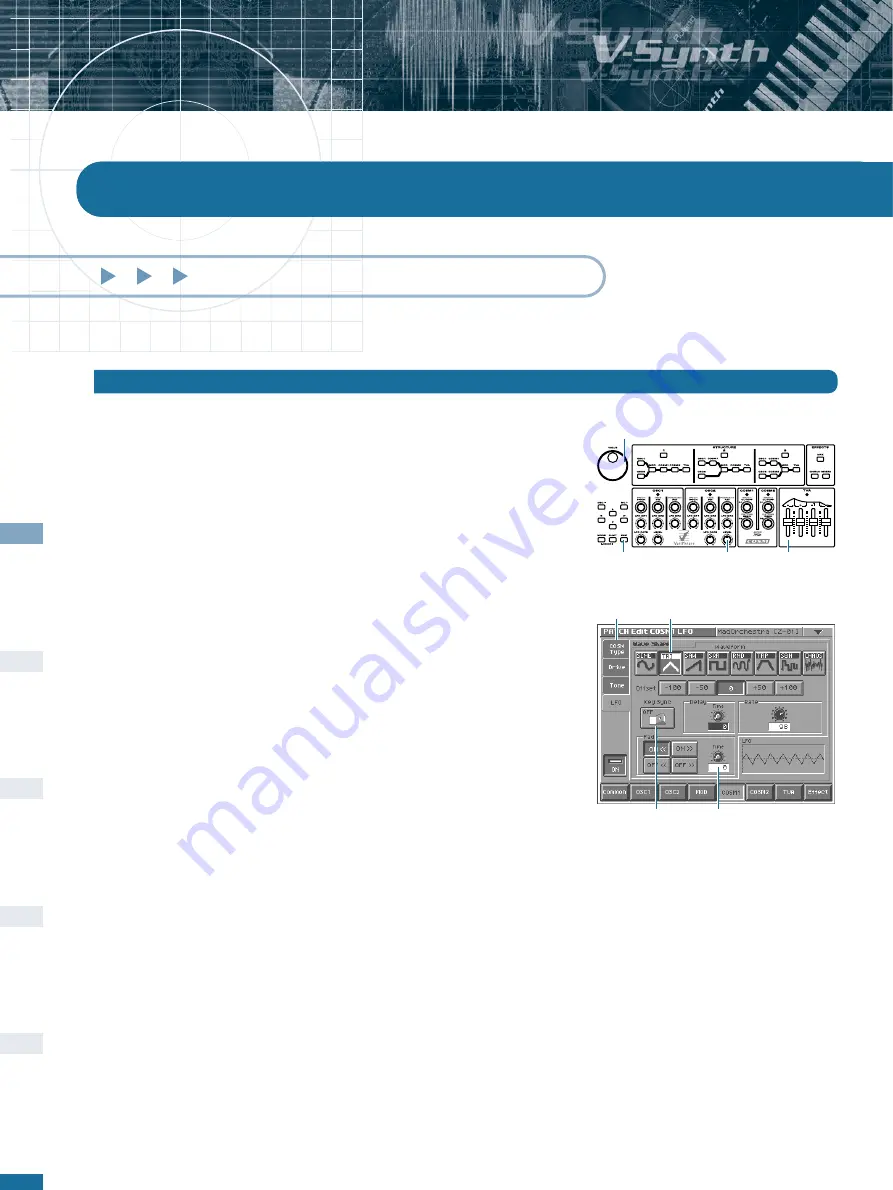
I n s i d e t h e V- S y n t h - A Tu t o r i a l
F i r s t S t e p s
6
There is quite a lot of “learning by doing” in this tutorial, and to get the most out of it
you should follow all the instructions strictly from start to finish. Later parts of the tutorial
assume that you have carried out all previous steps to the letter, e.g. that you have saved
a sound called
INIT PATCH
to patch number
512
, and one called “
Simplicity
” to
number
300
, etcetera. Instructions become progressively terse because you will become
more familiar with the programming environment and terminology.
To differentiate between physical and virtual controls, those on the panel are referred to
as
KNOB
,
BUTTON
,
SLIDER
,
VALUE DIAL
, whereas those appearing on the screen
are referred to as
PAD
,
TAB
,
CONTROL
or even
GRAPHIC
(depending upon function
and/or appearance).
TAB
s are used for selecting different pages within a section, and only appear on the left
or right of the screen. The combination pitch-bender and modulation control to the left
of the keyboard is simply referred to as the
BENDER
.
For the sake of simplicity, only
STRUCTURE
number 1 is used throughout the tutorial.
Split and Drum modes are not mentioned for the same reason - for further information,
please refer to the
Owner’s manual
.
Introduction
First Steps
knob
slider
button
dial
Tab
Pad
Control
Graphic
I n s i d e t h e V- S y n t h - A Tu t o r i a l





















